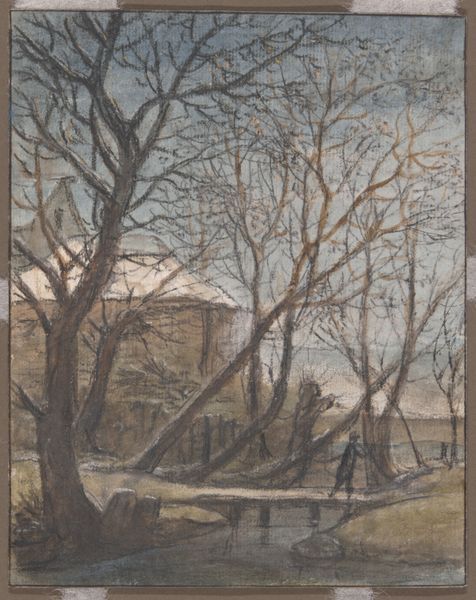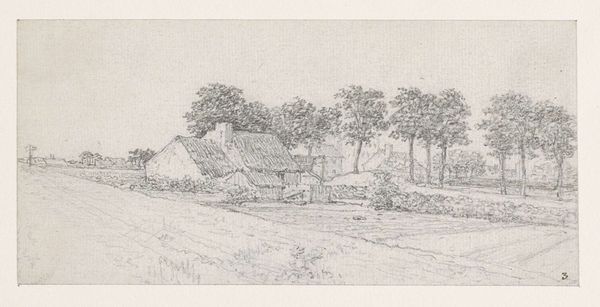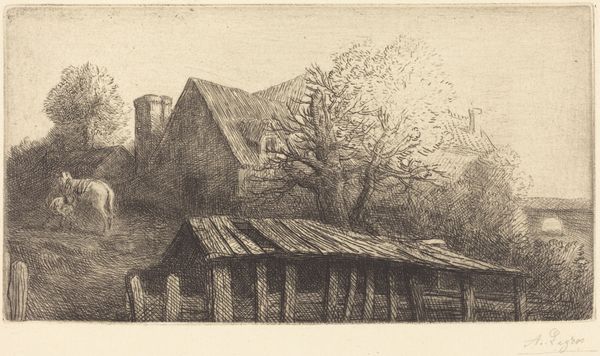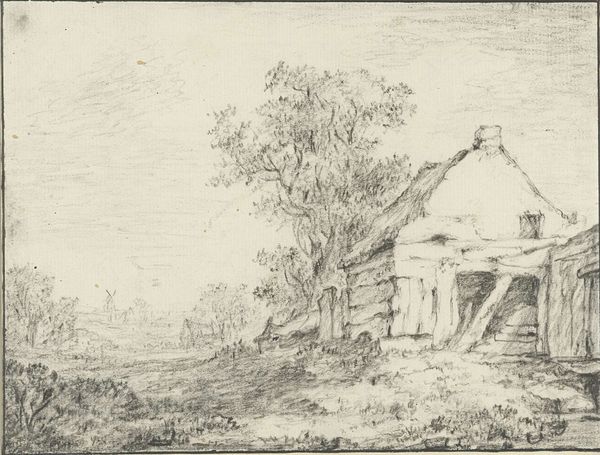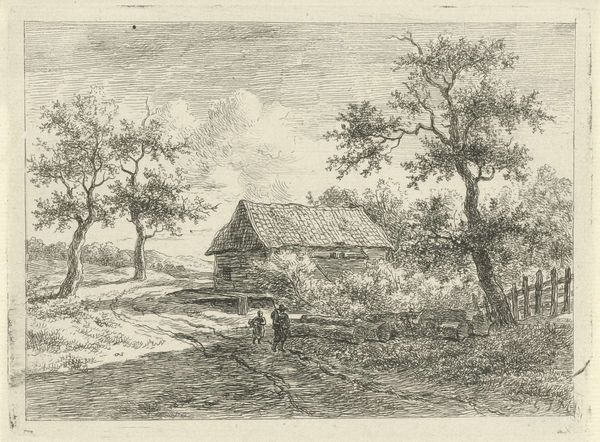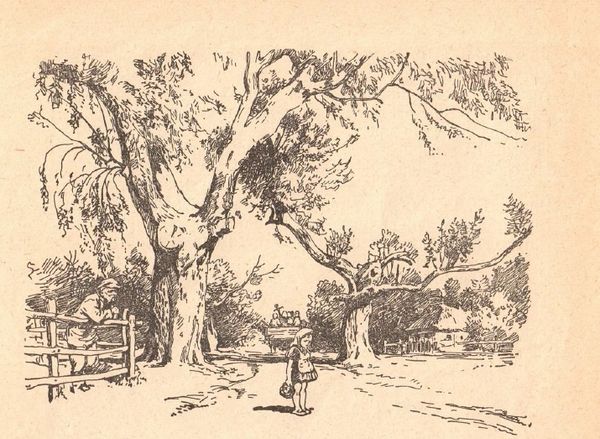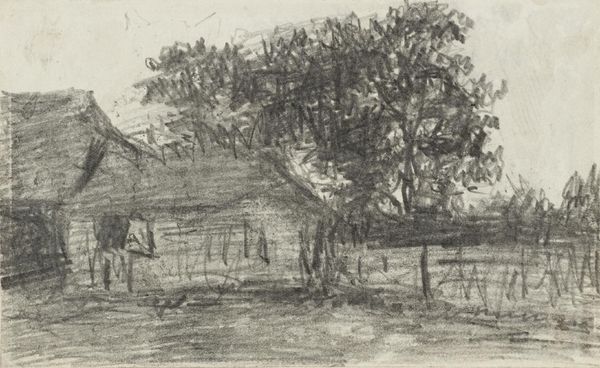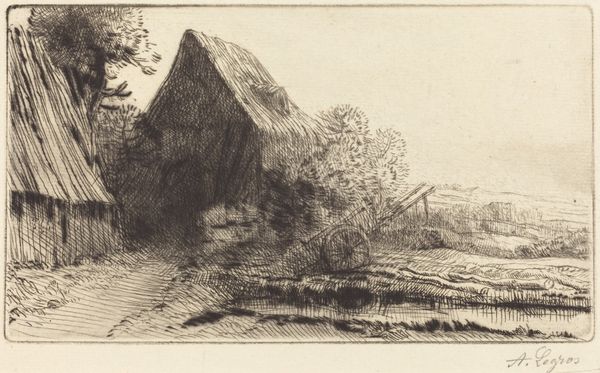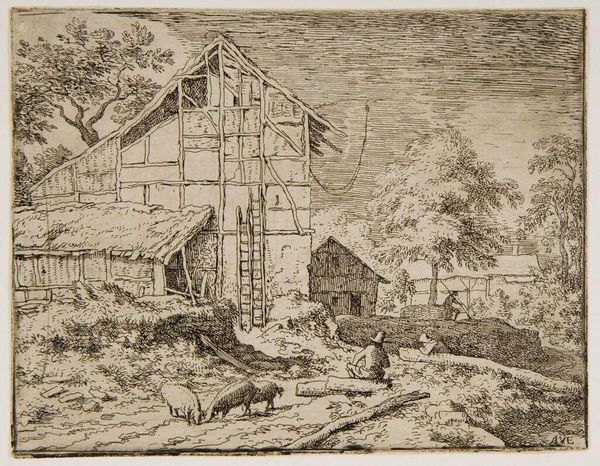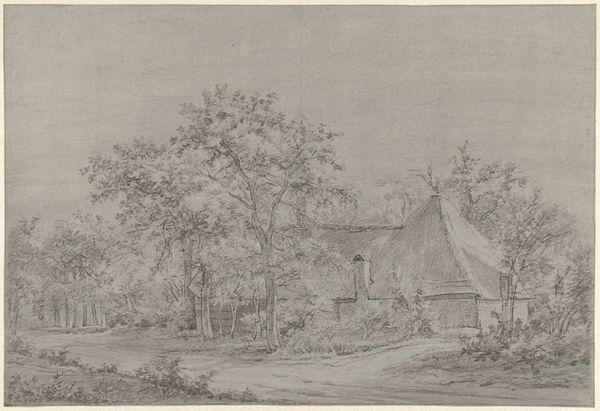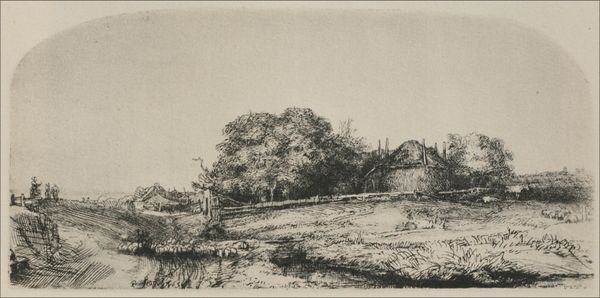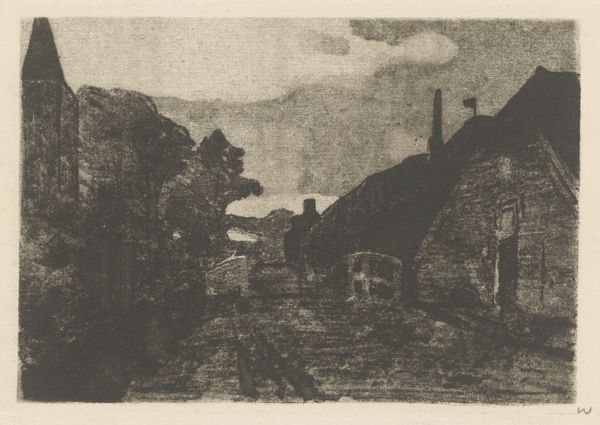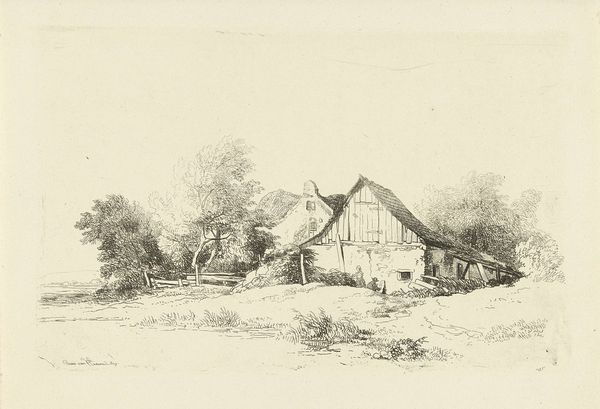
oil-paint
#
impressionism
#
oil-paint
#
landscape
#
oil painting
#
realism
Copyright: Public domain
Curator: Here we see Isaac Levitan's "House with broom trees," an oil-paint work from 1882. Editor: It feels almost claustrophobic, hemmed in by those trees and the shadow dominating the foreground. What strikes me is the heavy, tangible quality of the paint, almost rough-hewn like the building itself. Curator: Levitan often uses nature to explore themes of solitude and introspection, doesn’t he? Notice how the house, a symbol of home and hearth, is somewhat obscured, almost swallowed by the surrounding landscape. This could reflect a longing for belonging, a subtle anxiety about the impermanence of shelter and connection. Editor: Exactly. And it makes me wonder about the availability of those materials used. That thatched roof and the rough timber – it speaks to a very specific socio-economic reality. The landscape is worked upon as a field, yielding raw materials as well as the painting's surface, a primed cloth. How do those circumstances reflect in this domestic symbol? Curator: It's interesting that you frame it in that context. I think the broom trees, named such from their historic use in making besoms, invoke their protective function, an enchanted hedge around the family dwelling. They're witness-bearing, enduring even as the house ages. Levitan uses trees like characters throughout his work. Editor: I also consider how the work sits between impressionism and realism. The looser brushstrokes lend that ephemeral, impressionistic quality to the light, but the architectural detail is fairly precisely articulated, which root the image to the real place from where its material was derived. It’s a contradiction of the modern industrial aesthetic. Curator: Indeed. Perhaps it signals the transition between idealized landscape paintings and a more modern awareness of environment and dwelling. We begin to notice the reality of the relationship between humans and nature and culture. Editor: Thanks to that thick application of oil. It reminds us the image itself is crafted through labor and stuff. The landscape is shaped both within and without the canvas. Curator: An insightful assessment, a painting that’s so simple at first but truly encapsulates an evolving cultural attitude. Editor: Quite. Every mark contains stories that ripple both on and off its literal supports.
Comments
No comments
Be the first to comment and join the conversation on the ultimate creative platform.
